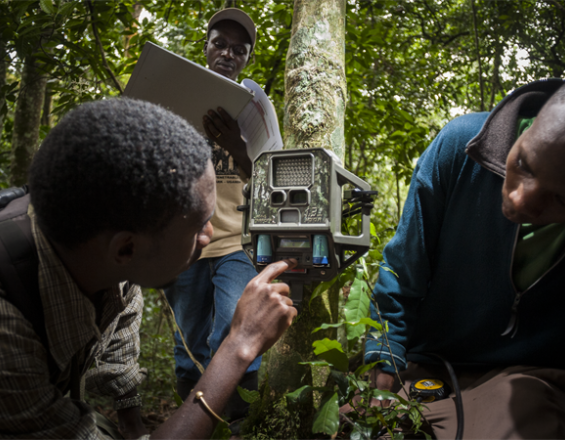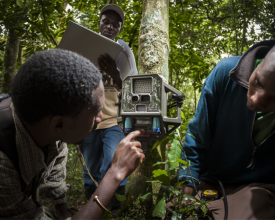CI-BHP Billiton Alliance for Protected Area Conservation
Full Solution

CI-BHP Billiton Alliance
Conservation International
The Conservation International (CI) - BHP Billiton Alliance supports the delivery of enduring benefits to biodiversity, ecosystems and other environmental resources around the world. This strategic long-term alliance was formed in 2011 to support the delivery of their conservation target, and to improve BHP Billiton’s approach to biodiversity management more broadly. To date, two conservation projects are underway in Australia and Chile.
Last update: 02 Oct 2020
5043 Views
Context
Challenges addressed
support delivery of enduring benefits to biodiversity, ecosystems /environmental resources
Location
Australia and Chile
South America
Process
Building Blocks
Design and implementation of conservation project portfolio
Through the Alliance, CI and BHP Billiton have jointly developed a systematic framework and approach to designing and implementing conservation investments. The approach leverages both BHP Billiton’s risk based approach to project design and CI’s experience and expertise in establishing long-term conservation areas that address financial, legal and governance requirements. Projects are selected based on their conservation significance and evaluated to ensure that they will make a lasting contribution to our global natural heritage. Each project is required to reach a high standard for effective conservation management and will be supported by a sustainable financing mechanism, so benefits to people and nature will continue for many years into the future.
Enabling factors
The approach leverages both BHP Billiton’s risk based approach to project design and CI’s experience and expertise in establishing long-term conservation areas that address financial, legal and governance requirements.
Lesson learned
Prior to launching the collaboration, both organizations spent a year collaborating, building trust, understanding respective expertise, tools, management systems and jointly piloting and developing processes that formed the basis for the Alliance. One of the applied learning’s of the Alliance to date has been application of new risk assessment methodologies to conservation projects, using insights from BHP Billiton’s robust systems for risk identification, assessment, prevention and control. These methodologies, when applied to conservation project design, allow for improved communication of project planning and implementation to decision makers whose core area of business expertise fall outside environmental conservation. Importantly, they have also resulted in project investments that should be resilient to a variety of factors and events – including reputational, financial and implementation risks.
Inform corporate requirements
CI has been providing technical expertise to BHP Billiton to help them manage land and enhance biodiversity in a responsible manner. This has included contributing to improvements in their corporate environmental requirements in the areas of compensatory actions and the definition of ‘area of influence’, which takes into account business activities and their potential direct, indirect and cumulative impacts on the environment.
Enabling factors
Please contact solution provider
Lesson learned
BHP Billiton has applied lessons learnt through the governance and financing requirements for protected areas to establish more robust internal requirements for compensatory actions (or offsets).
Impacts
The Alliance has been influential in enhancing BHP Billiton’s approach to biodiversity. As part of a recent review of environmental management requirements, BHP Billiton has established principles to guide its businesses on establishing compensatory actions. The principles require that compensatory actions must be appropriate and not contribute to any additional impacts, must be effective in responding to the residual impact and must endure in the long term. As of 2014, BHP Billiton has voluntarily committed more than US$30 million to conservation, including the Five Rivers Conservation Area in Tasmania, Australia, and the Valdivian Coastal Reserve Project in southern Chile.
Results:
• Conservation of ~ 60,000 ha of habitat for 16 globally threatened species
• Support of more than 50 direct jobs
• Generation of ~ 900 million cubic metres of high-quality fresh water
• Avoidance of the release of 75,000 tonnes of CO2 -e per annum
Beneficiaries
Local communities, Local government
